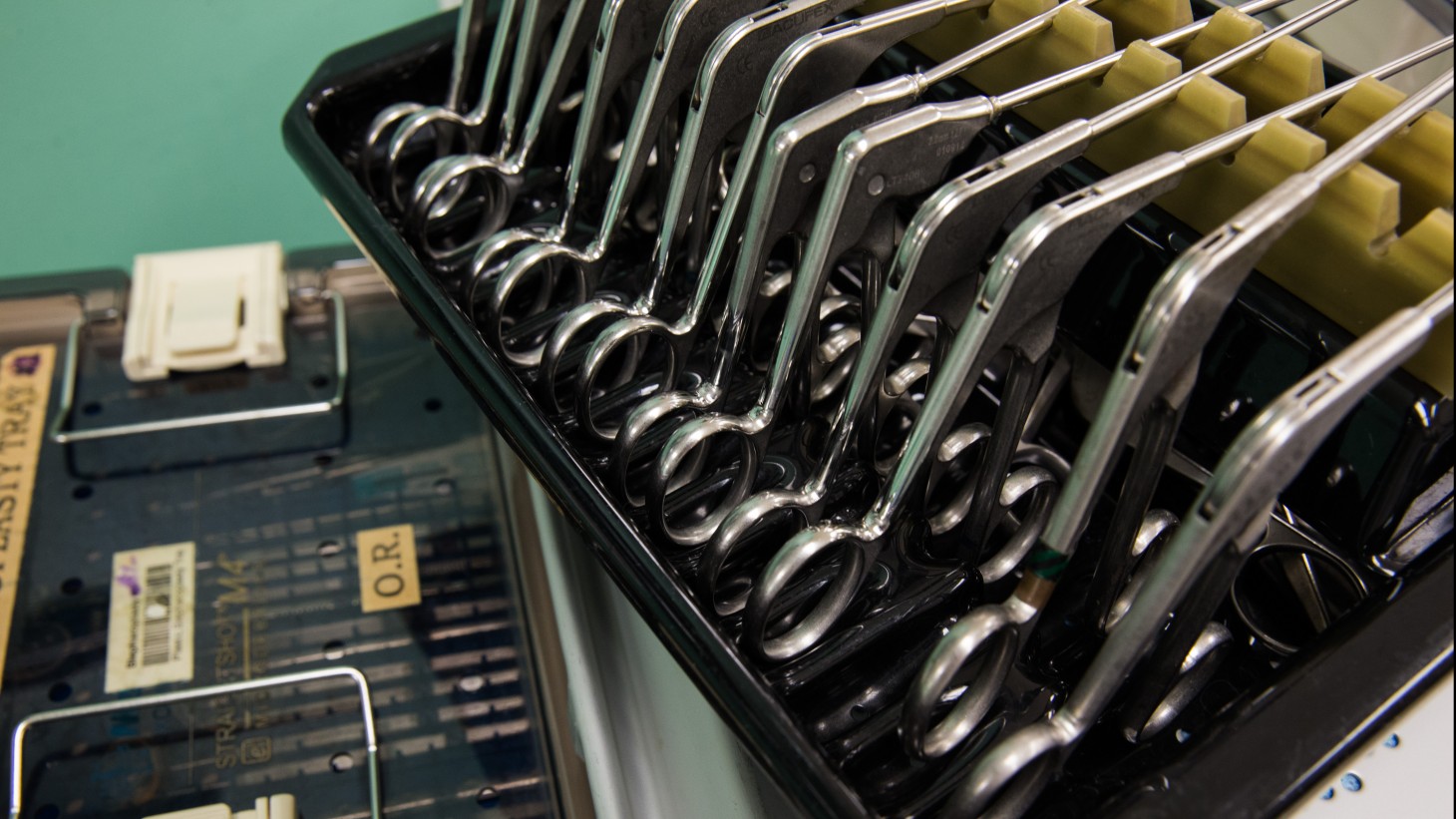Total Health and Workplace Safety
Safety on a Silver Platter

Standardizing tasks—such as passing sharp instruments in the operating room—is creating a safer workplace at West Los Angeles Medical Center.
By standardizing common tasks, and having regular updates, you can help to reduce workplace injuries
Want a safer workplace served up on a silver platter?
Then stop by the operating room at Kaiser Permanente’s West Los Angeles Medical Center in Southern California. Surgeons and the other health care workers there pass sharp instruments to one another on silver trays—rather than passing them hand to hand—which reduced injuries related to handling sharp instruments during procedures by 34 percent between September 2013 and May 2014.
“We can see the results,” says Lisa Duff, a surgical tech and workplace safety champion at the facility. This success is part of a new emphasis at the facility on task standardization—analyzing each step of an activity, identifying the potentially hazardous steps, coming up with a safer way of doing things and then ensuring everyone follows the new process the same way, every time.
How to reduce risk
“Injuries occur when there is not consistency,” says Tracy Fietz, chief administrative officer for Southern California Permanente Medical Group at West L.A. “If you break [a task] apart on a fishbone diagram, you can identify where the risks are. It is about removing variation.”
Standardizing practices also has helped several departments reduce—and in some cases eliminate—sharps-related injuries for up to 17 consecutive months. It’s also helped reduce injuries to EVS workers by 75 percent when they clean floors.
Another practice that is improving safety at West L.A. Medical Center is regular monthly meetings between senior leaders, including Fietz, and the labor and management safety leaders of targeted departments. Departments that have special line-of-sight safety goals (see below) in the region’s Performance Sharing Program get special attention. The gatherings are a space to analyze processes, see what’s working—and what isn’t—and collect information to share with others.
How partnership helps
“I work with managers and the workplace safety champions, because it’s a partnership,” says Nor Jemjemian, the chief administrative officer for Kaiser Permanente Hospital/Health Plan at West L.A., who also leads those meetings. “I want the employees doing the tasks to be part of the solutions.”
Union-represented employees, for their part, appreciate the crystal-clear message top leadership is sending.
“You need management to back you up when you speak up,” says Duff, a member of SEIU-UHW. “Employees know that our managers will back them up 200 percent.”
Open communication, trust and partnership processes are the foundation of a safer workplace, says Jemjemian.
“When I was an employee, there were [hazardous] tasks I did that my manager didn’t know about,” he says. Today, in contrast, “UBTs create a venue and a forum to discuss the everyday work.”
